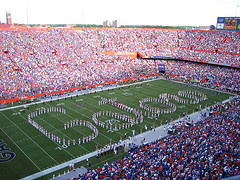PART 3 OF A 7-PARTER ON FALSE TIME PROMISES
WE LOSE TIME DUE TO LIES, FALSE PROMISES AND TIME “ESTIMATES.”
People constantly give us false job estimates and fool us. And we don’t help the situation because we often fool ourselves.
WE LOSE PATIENCE AND MONEY!
The myth about how long it will take to do anything could relate to how long it takes to get to a destination, or service an appliance, or when our airplane will take off. (OK, IF!)
It’s driving us to distraction and costing us money.
Part 3: 8 ways colleges’ lie about classroom hours.

DEFINITIONS
(So that we are talking apples to apples here!)
PROGRAM: A course of study in a college: say, Business.
SUBJECT: A 3-hr/ week class. EG: Math 304.
COURSE: A course of study (see program). (Often, confusingly, called a “subject.)
CLASS: Usually 3 hr/week. (Can be 6 Hrs with labs.) Also, a one-shot as in, “I’m going to class.”
(Subjects are 1-3 hours; labs: 2-4. Subjects can be 1 or 2 hour classes. I’ll use those examples.)
In 15 week semesters that suggests 45 hours of instruction. In 12 week quarters, it is only 36 hours, a 9-hour difference or 20 percent! (Is somebody being short-changed here?) There’s our first loss of expected time. You might expect colleges to use standardized usemester systems.
Nope. Colleges have semesters of 15, 14, 13 and 12* weeks (*that’s the quarter system).
Take a 14 week semester. That looks like 42 hours of instruction (14 weeks x 3 hours per week), but it is NOT for several reasons:

- The final week is exam week, (no class); that means 13 class weeks or 39 hours of instruction.
- The first week of term is chaotic: students add/drop subjects, register late, switch sections, etc. It is frustrating for students who are there ready the first week (they lose time that way).
This is just one example of how much you lose with a false promise.
8 eight ways college calendars lie about instructional hours.
ONE: real instructional allotment
College classes calculated weekly for both semesters and quarters have traditionally been 3 hours per week per subject. As we’ll see, that’s often false.
TWO: late arrivals
When students arrive in the 2nd week (some come in the e3rd!) they are immediately behind. Some professors review first week material which leaves the the on-time students at a disadvantage. They’re bored and annoyed–they already took this stuff.
If you are a student who comes a week late you’re down to 12 weeks of instruction (36 hours) and you are already behind. (Granted, this is your fault, not the college’s.)
THREE: what’s an hour?
The 3 periods of instruction per week are “hours:” but they are really like those psychiatrists’ use: 50 minutes– with a ten minute break between classes.
That takes another 30 minutes off the weekly class instruction. Now it is 2.5 hours per week, not 3, so the total is 32.5 instructional time for the 13 weeks.
However, it is only 30 hours if you have arrived a week late. It is 27.5 hours if you arrive in the second week. Two weeks late and you are down to 25 hours of instruction!
(Thanks for dropping by!)
FOUR: lost in time
Now, calculate the number of classes that you lose to orientation , snowstorms, BBQs, computer meltdowns, air conditioning failure, football games and other campus activities. One or two a semester? No, often it’s six classes that a student misses.
Either you get less time than people say you’ll get to do a thing–whatever it is–or it will take longer than they say it will to do it. It’s real life, but look closely: this knowledge will change our perception of the real nature of time in your life.
FIVE: illness
Guess how many classes many students miss due to “illness” in a course. My experience is about five.
SIX: “other” factors

|
That is, on average, 8 classes! 8! |
Now, add the number of days you miss because of other factors:
- fatigue
- partying (see “illness” too!)

Woman Holding Cup of Water and Lemon — Image by © Royalty-Free/Corbis
- late work hours
- fear of showing up without a due assignment
- falling in love
- falling in lust (more common!)
- fighting a traffic ticket
- going to a medical
- taking an extra weekend day for no particular reason
- travelling back to the college from…somewhere
- real medical reasons(students suffer a lot of depression, for example)
- any other reason.
SEVEN: STILL more wasted time factors!

- If you miss a once-a-week, three-hour class, you have missed a week of (regular) instruction.
- If you cut only two of these you will miss 6 of the 13 classes or about one-sixth of the semester’s instructional time.
EIGHT: lost (time) in the halls
We know “hour-long” classes are 50 minutes. But by the time you
- get something to eat
- hit the washroom
- make phone calls
- text some messages

- talk to friends in the hall
- remember that their next class is not where you are standing (but in another building, across the campus and three floors up) and actually arrive in the right class room…then…
the time left is more like 45 minutes than 50 (and that’s being wildly conservative) or 2 :15 /each class time, not the originally optimistic 3 Hrs/wk as it states in the calendar
(The class time is really a helluva or less than that, but remember, I’m being nice) .
You lose 15 minutes an hour (minimum), a quarter of the advertised time.
Wait, it gets worse! Watch for Part 4 of this series!
NEXT:
Housekeeping kills time and fosters false expectations!
HERE’S A LIST AND LINKS TO THE PREVIOUS SIX POSTS IN THE SERIES.
How we fool ourselves by believing false time “estimates.”
The evil ETA system costs us time and money!
If this article was of interest, please click here to join the free registration for Self-Knowledge College. I’ll be sending you a lot of free solid information about YOU!






